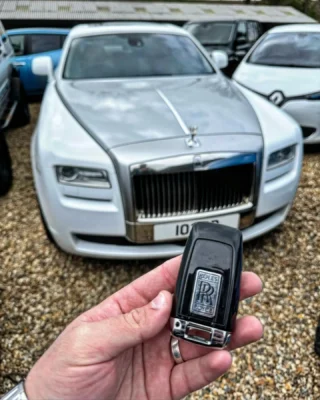Car Key Jammed: Causes, Solutions, and Preventive Measures
A car key jammed in the ignition is a common dilemma dealt with by vehicle owners. The disappointment often intensifies when people are pushed for time or require immediate access to their vehicle. This post aims to offer detailed guidance on comprehending the causes behind a jammed key, prospective solutions to fix the problem, and preventive procedures to avoid recurrence in the future.
Comprehending the Causes of a Jammed Car Key
A car key may end up being jammed in the ignition for various reasons. Some of these causes consist of:
| Cause | Description |
|---|---|
| Damaged Key | A key that has ended up being worn could have a hard time to fit properly within the ignition. |
| Ignition Cylinder Issues | Dirt, debris, or damage within the ignition cylinder can obstruct the key. |
| Steering Wheel Lock | If the steering wheel is locked, it can prevent the key from turning or being removed. |
| Electrical System Malfunction | Malfunctioning electrical connections or issues with the ignition switch can trigger issues. |
| Cold Weather | Extremely low temperature levels can trigger condensation to freeze within the ignition system. |
Recognizing the Problem
Before applying any solutions, it is important to detect the issue plainly. The following list can help in identifying the underlying issue:
- Check the Steering Wheel: If the steering wheel is locked, gently turn it while attempting to remove the key.
- Inspect the Key: Examine the key for signs of wear and tear, or flexing which might inhibit proper performance.
- Evaluate the Ignition Cylinder: Look for visible debris or internal breakdowns that could be triggering the jam.
- Temperature level Check: Consider the environment conditions. Is it unusually cold, which could affect ignition functionality?
Solutions for a Jammed Car Key
When the origin has actually been established, a number of solutions can be applied to solve the jammed key concern.
Immediate Solutions
- Gentle Wiggling: Attempt to carefully wiggle the key while trying to turn or pull it out. Avoid utilizing extreme force to prevent damage.
- Lubrication: Applying a percentage of graphite or silicone lubricant can help loosen a stuck key. Spray or insert it into the ignition cylinder thoroughly.
- Usage Pliers: If the key's head is available, using pliers might provide the needed grip to pull the key out without much force.
- Battery Disconnect: If the key is stubbornly stuck, detaching the vehicle battery for a couple of minutes might reset the electrical elements.
Long-lasting Solutions
If the problem persists or reoccurs regularly, consider the following actions:
- Key Replacement: If the key is worn out, it might be essential to replace it. Go to a locksmith or your car dealership for a new key.
- Ignition Cylinder Replacement: In cases of extreme damage or regular jams, changing the ignition cylinder itself may be needed.
- Professional Assessment: When DIY attempts stop working, looking for help from a professional mechanic is recommended. They can detect and repair much deeper issues within the car's ignition or electrical system.
| Option | When to Use |
|---|---|
| Gentle Wiggling | When the key is somewhat stuck however seems practical. |
| Lubrication | If the ignition appears unclean or the key is hard to turn. |
| Use Pliers | When the key head is available and there's a noticeable grip. |
| Expert Assessment | When all DIY implies stop working or when deeper mechanical/electrical problems are suspected. |
Preventive Measures
To avoid possible concerns in the future, vehicle owners can utilize a number of preventative strategies:
- Regular Maintenance: Schedule regular assessments of your vehicle's ignition system to guarantee everything is working efficiently.
- Key Care: Handle car keys with care, preventing dropping them or exposing them to wetness and extreme chemicals.
- Temperature Management: Protect the car from extreme climate condition whenever possible. Think about utilizing a garage for parking during extreme cold or heat.
- Periodic Lubrication: Regularly apply lubricants to the ignition cylinder and key, helping prevent dust accumulation and ensuring smoother operation.
Regularly Asked Questions (FAQs)
Q1: Can I use oil to lubricate my car key or ignition?
A1: It is not advisable to use oil, as it can attract dirt and particles. Rather, utilize automotive locksmith or graphite-based lubes.
Q2: What should I do if my key breaks off in the ignition?
A2: If a key breaks off, do not try to get rid of the broken piece yourself. Look for support from an expert locksmith or mechanic.
Q3: Is it safe to utilize excessive force to try and eliminate a jammed key?
A3: No, using extreme force can harm the ignition cylinder or the key, resulting in more considerable concerns and possibly costing more in repairs.
Q4: How can I inform if my ignition cylinder needs to be changed?
A4: If you often experience key jamming, problem in turning the key, or persistent electrical issues in beginning the vehicle, it may be time for a replacement.
A jammed car key can be an inconvenient and frustrating situation for any vehicle owner. By comprehending the underlying causes, carrying out the right solutions, and embracing preventive measures, people can reduce the possibility of facing this concern in the future. When all else stops working, seeking professional support makes sure that the problem is successfully resolved, enabling you to go back to stress-free driving.

